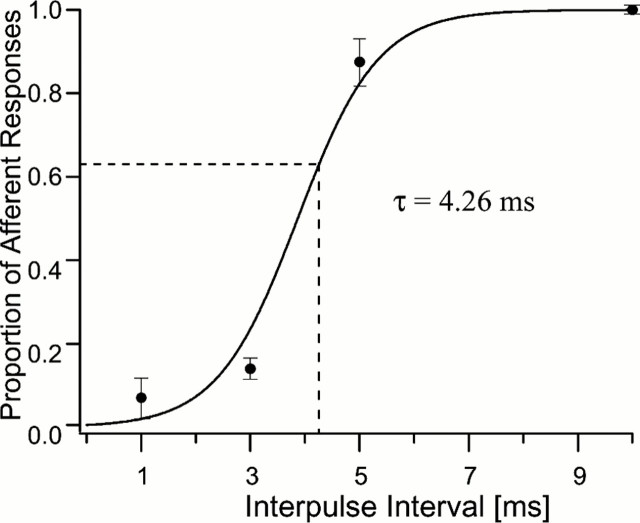Fig. 5.
The proportion of phasic afferent spikes to sound pulses (10 msec, 5 kHz, 85 dB SPL) presented with varying interpulse intervals. Because the interpulse interval increases the phasic afferent is able to reset before the next sound pulse, so there is a higher proportion of responses. The time constant (τ) for the refractory period of this phasic afferent is defined as the interpulse interval that will allow the afferent to respond to 63% of the sound pulses.

